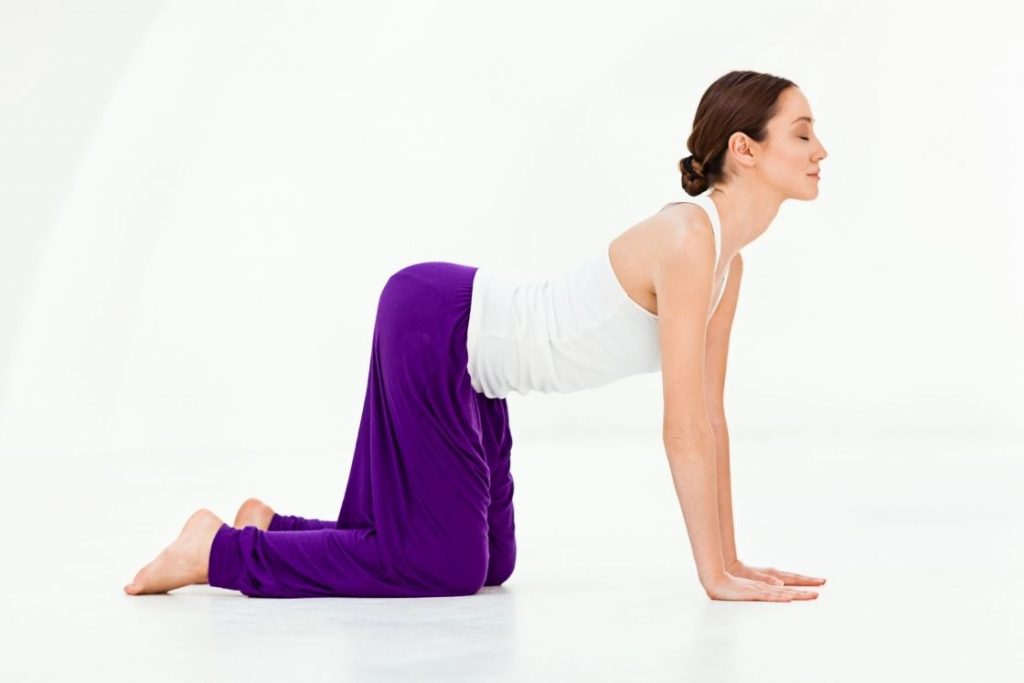
Bitilasana, the cow pose, is a spine warming up posture always practiced with its counterpose Marjariasana (cat pose). The combined pose is known as the cat-cow stretch.
It’s performed in a kneeling position which gives the spine a smooth bending stretch. Contraction action in this pose focuses on stretching the neck, spine, and hip flexors.
Bitilasana is performed by coming on a tabletop position, followed by stretching the neck and spine with deep breathing. The abdominal muscles are also involved actively while holding the pose.
Bitilasana Meaning
In Sanskrit, Bitila means cow, asana means pose. On combining both, Bitilasana means cow pose.
This pose is called “Bitilasana – the cow pose” because in the final step of this pose a practitioner’s body comes in such a position that looks like a stretching cow’s limbs. Imagine a cow standing on its four feet. The arms and legs make four feet of a cow and the arched abdomen make the cow’s torso.
It should be noted here; cow face pose (gomukhasana) is a hip opener sitting pose whereas the cow pose is a kneeling stretching pose. They both share the resemblance with the cow but their effect & procedure are completely different.
Cow pose is a gentle warm-up yogic posture that improves flexibility, blood circulation, and state of mind. The stretched spine leads to calming the mind soothing the nervous system.
Bitilasana Practice Guide
Follow this guide below to safely practice the cow pose.
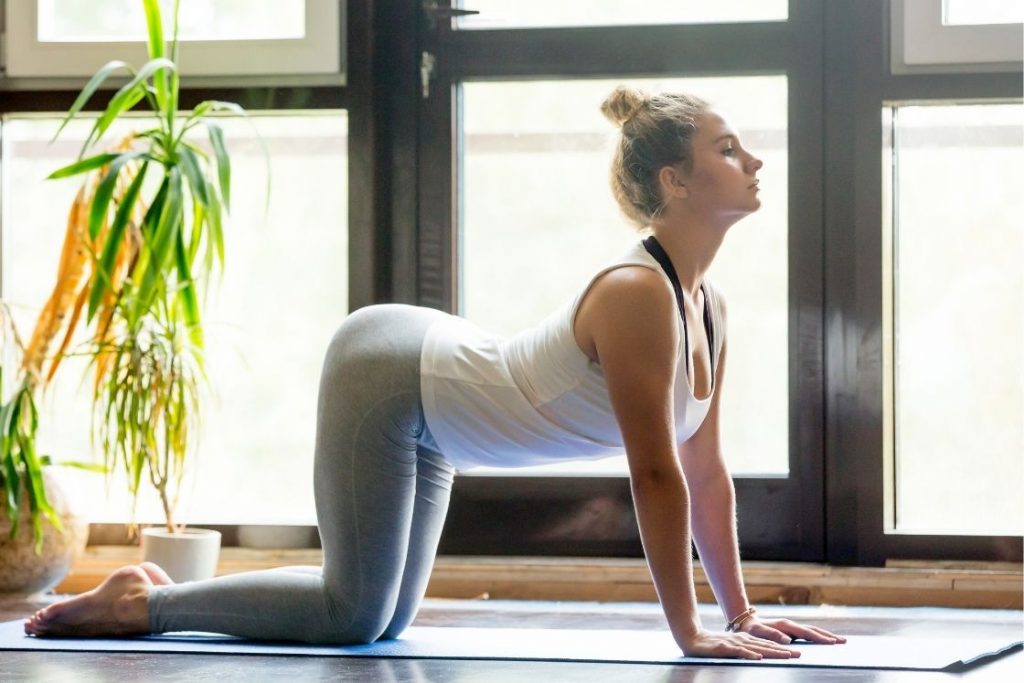
Precautions & Contraindications
- Do not practice it if you have a neck injury.
- In case of a weak neck avoid straining the neck looking up, instead keep your gaze forward.
- Avoid performing bitilasana you have a bad knee.
- People with carpal tunnel syndrome or ganglion cyst must be cautious while performing this pose.
Preparatory Poses
Bitilasana is itself a gentle warm-up pose. It is better if you practice Viparita Karani mudra or legs-up-the-wall pose before getting into it.
How to Do Bitilasana (Steps)
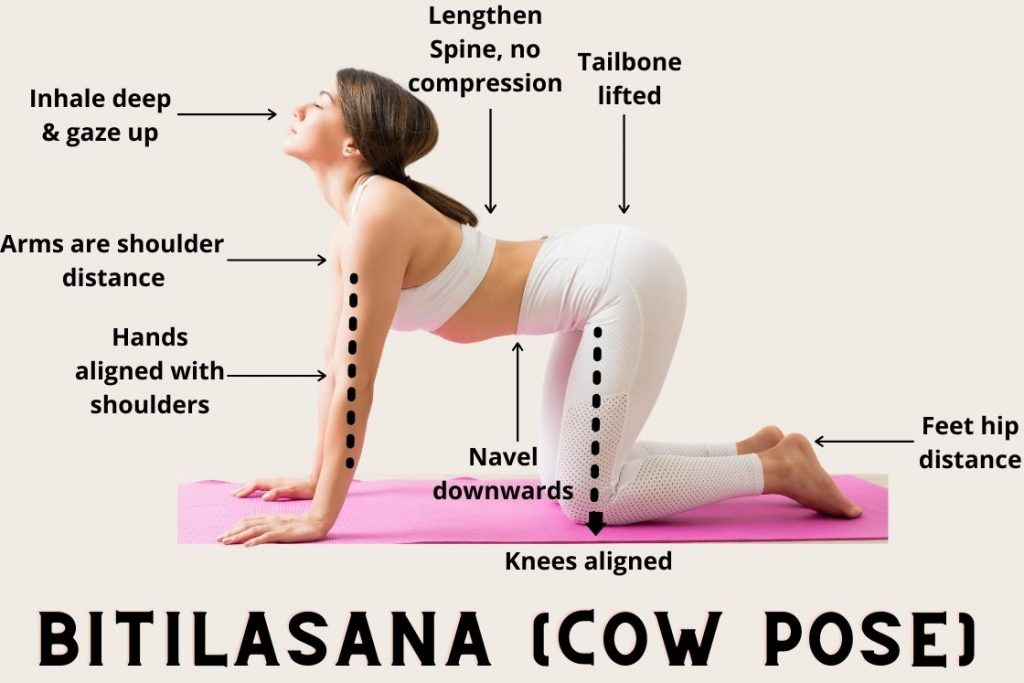
- From tadasana, come to your all fours in a tabletop pose.
- Bring your knees under your hips and wrists under shoulders.
- Let your head hang neutrally keeping the gaze on the floor.
- Inhale, lifting your buttocks to the ceiling stretch your chest downward.
- Closing your eyes raise your head and let your abdomen sink to the floor with an arched back.
- Hold the pose for a few seconds.
- Exhale bringing the head to the center and relaxing the spine come to tabletop pose.
- It is followed by another posture in the flow. With an exhalation, the chin is drawn to the chest arching your back upward. This is Marjariasana (Bidalasana).
- Continue these two movements of stretching the spine by lifting the head and arching the spine drawing your chin to the chest 5-6 times.
- Then return to tabletop pose and relax in child pose.
Beginner’s tips
- Keep your shoulder blades wide and away from ears while twisting the neck.
- Do not strain the neck much while performing bitilasana.
Follow-up Poses
Balasana is performed as the counterpose to this deep stretching pose.
Variations
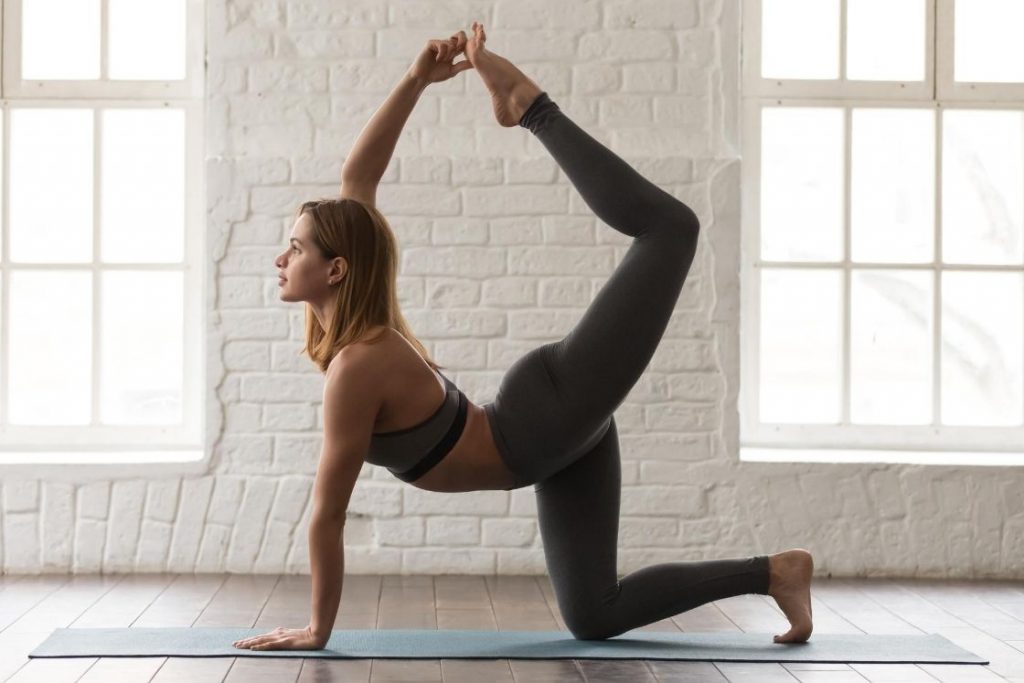
These variations you can involve in your practice of bitilasana:
- Bitilasana with one leg up – After reaching the final pose in bitilasana you can lift one leg off the floor. Keeping the knee bent point its toes up, now gently bring your alternative hand to grab the raised foot.
This variant of Bitilasana is called Vyaghrasana (tiger pose). - Bitilasana leaning forward – After attaining the pose, walk your palms forward and bring your chest and chin to the floor. Keep your buttocks raised to the ceiling.
Bitilasana Benefits
1. Provides flexibility
Bitiliasana stretches the muscles of the spine, neck abdomen, and hips. The core muscles are also actively engaged in this pose that enhances strength and stamina. The muscles of the arms and wrist are also stimulated. It makes these muscles flexible and strong.
2. Strengthens the spine
Bitilasana is majorly a spinal movement pose. Along with stretching the neck muscles the spine is also elongated to the crown. It improves the blood flow into the spine and hence makes it stronger.
Moreover, its function of relieving spine excessive tension makes cow pose suitable to practice in pregnancy. Pregnant women can practice it in all stages of pregnancy to get relief from back ache.
3. Improves metabolism
Bitilasana stimulated adrenal glands while stimulating the internal organs. It improves metabolism, maintains hormone secretion. This benefits the body internally in a long run.
4. Better digestion
The abdominal muscles are stimulated while holding the pose. They are massaged gently and digestive organs are also activated with receiving enhanced blood flow. This helps in improving digestion.
5. Influences energy chakras
This basic posture has so much to offer as the stretches involved also activates the three chakras. As the abdomen, navel, and the neck are deeply stretched, it activates the Solar Plexus, Root Chakra, and Throat Chakra.
7. Remedial for sciatica
The spine is stretched and strengthens by bitilasana. It also works on improving the flexibility of the hips. Therefore any lower back pain like sciatica is cured and prevented through this asana.
8. Relieves mental disturbances
With strengthening the spine the brain also receives an increased amount of oxygen. It clears the mental blocks sand soothes the nervous system. It reduces stress, tension, and promotes sound sleep.
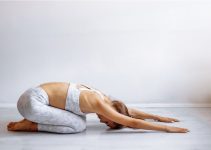
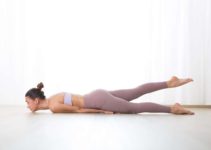
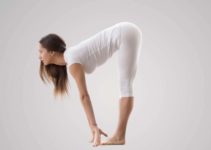


Amazing and Correct Details and info